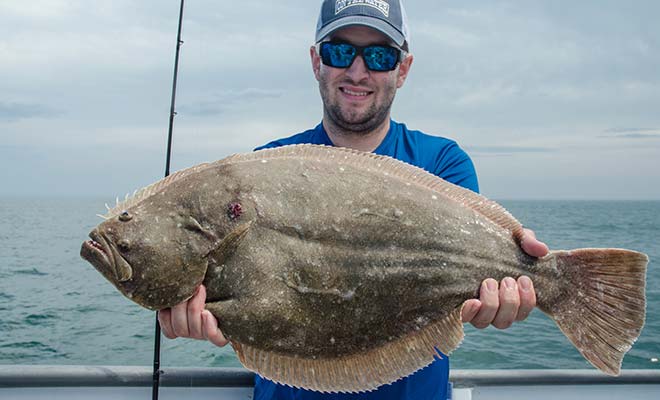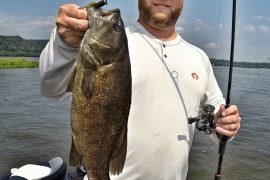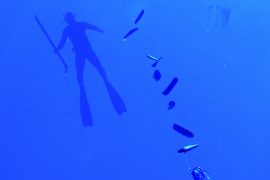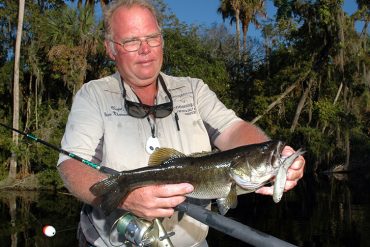
Fishing snaggy structure is essential to filling your fluke limit with the largest specimens.
With the ever-increasing size limits for fluke, learning the locations and techniques to capture the largest specimens has become of paramount importance for putting keepers in the box. Fishing structure is essential since the chance of capturing large fluke on sandy, no-relief bottoms is haphazard at best.
Finding The Wrecks
Many chartplotter chips are preloaded with wrecks and snags. Like many of the sources I will mention, they may not be entirely accurate and might require a grid search to locate the major bulk of the structure. Keep in mind that some of the wrecks are not single pieces, but instead are portions broken up by the original demise of the vessel or split by the ravages of coastal storms. These can be scattered over hundreds of yards.
New Jersey’s artificial reef sites are available free online and provide detailed outlays of the various wrecks, tanks, subway cars, and rock and concrete deployments. Over time, the structures sink into the sand and their benthic relief deteriorates as the years go by. An example is the heavy army tanks—some are still providing good relief, while others have sunk well into the sand. Many large wrecks become more productive as pieces of the superstructure break off and join the debris field adjacent to the main wreck. Also, some of the “lighter” structures such as subway cars will shift during storms and may relocate hundreds of feet from their original locations!

Wreck locations are also noted on laminated charts sold online, at tackle stores, and at fishing shows. Some of your closest friends may be kind enough to share “numbers” for wrecks they fish as well.
Paying attention to your chartplotter while fishing and moving from spot to spot is of utmost importance for discovering new pieces to fish on. Several years ago, I found a very small, barely visible debris field from an old wreck that produced nearly 50 keeper-sized fluke in one year alone.
When moving about, it is wise to be on the lookout for flags deployed by commercial fishermen. These flags mark good structure that could be concrete pipe or other lost material, old wrecks, or coral beds. I’ve caught many limits of fluke from these areas, which are often unrecorded and not found on many charts.
For those not inclined to fish offshore, good structure can be found inside the inlets as well. Many vessels have sunk in our backwaters and bays, some of which have published numbers, and some are known only to those who have found them. Keep in mind that sodbanks and jetties are good structure as well, and many of the factors related to wreck-fishing applies to these areas.
Rigging For Wrecks
Many anglers believe they need heavy gear to fish wrecks to avoid breaking off their rigs on these snaggy structures. In fact, I’ve found the opposite to be most productive.

Braided line is a must when fishing structure because its thin diameter and reduced water resistance enables more straight up-and-down fishing than monofilament. The lighter the braid, the easier it is to fish since it cuts through the water better, reducing the pull on the line from the current and wind-driven boat movement. Braid of 10- to 15-pound test is more than adequate to catch large fluke and has enough strength to free a rig stuck on structure. Many anglers like to add a piece of mono or fluorocarbon to help reduce abrasion from the structures drifted over. I use a 6-foot length of 20- to 30-pound test for this purpose.
When fishing structure, dragging rigs are the most prone to snagging, and drifting through a wreck field while dead-sticking a rod is a recipe for a lost rig or even a rod pulled overboard.
Bucktailing is my preferred method, and time has proven that smaller ones usually capture larger fluke because an angler can more easily mimic the bait profile and motion. By using lighter braid, one can fish with lighter bucktails than would otherwise be possible.
Tackle, whether spinning or conventional, should lean toward the light side to match the thin braid and lighter bucktails. The rod should be a graphite composite with a stiff enough makeup to allow the angler to dance the bucktails effectively above the relief field below. Rods that are too parabolic tend to drop the rigs into the structure, causing them to be snagged. They are also ineffective at lifting the fluke out of the nooks and crannies of the structure where they tend to take up residence. Many anglers have a hard time envisioning the use of a 1- to 2-ounce bucktail in 90 to 100 feet of water with a rod and reel that looks better suited for freshwater, but this armament can easily be used on days with proper conditions. However, it’s smart to have a second, slightly more robust setup available for windier days requiring stiffer tackle.
A bucktail works best when danced above the bottom. The same jig totally loses its effectiveness—and paint—when it is dragged through the sand or scraped on sharp wreck pieces. A full…





